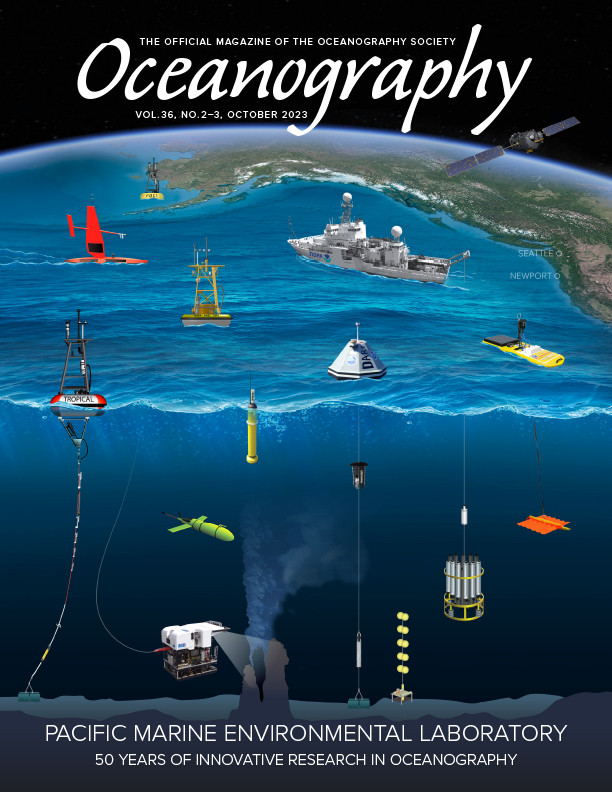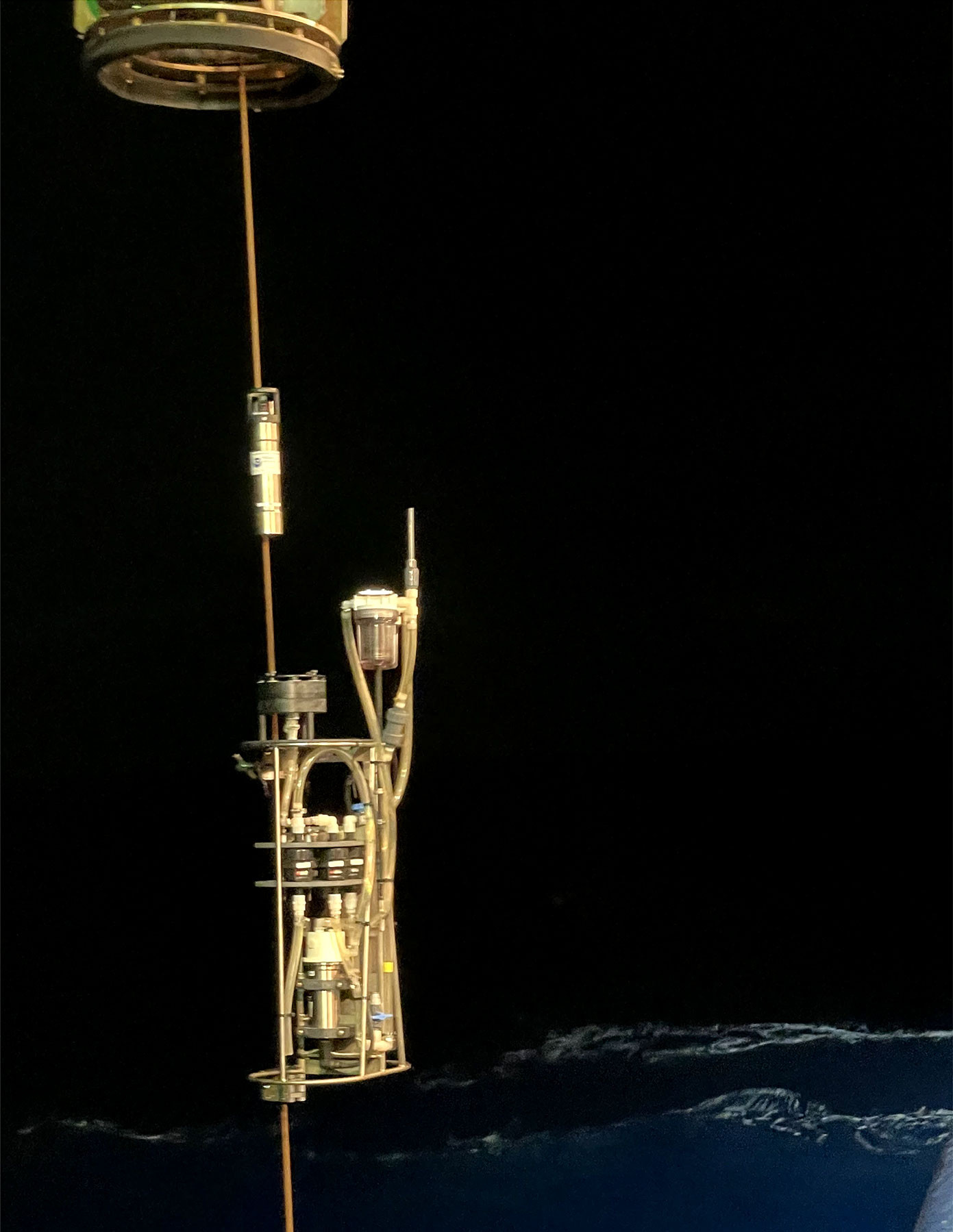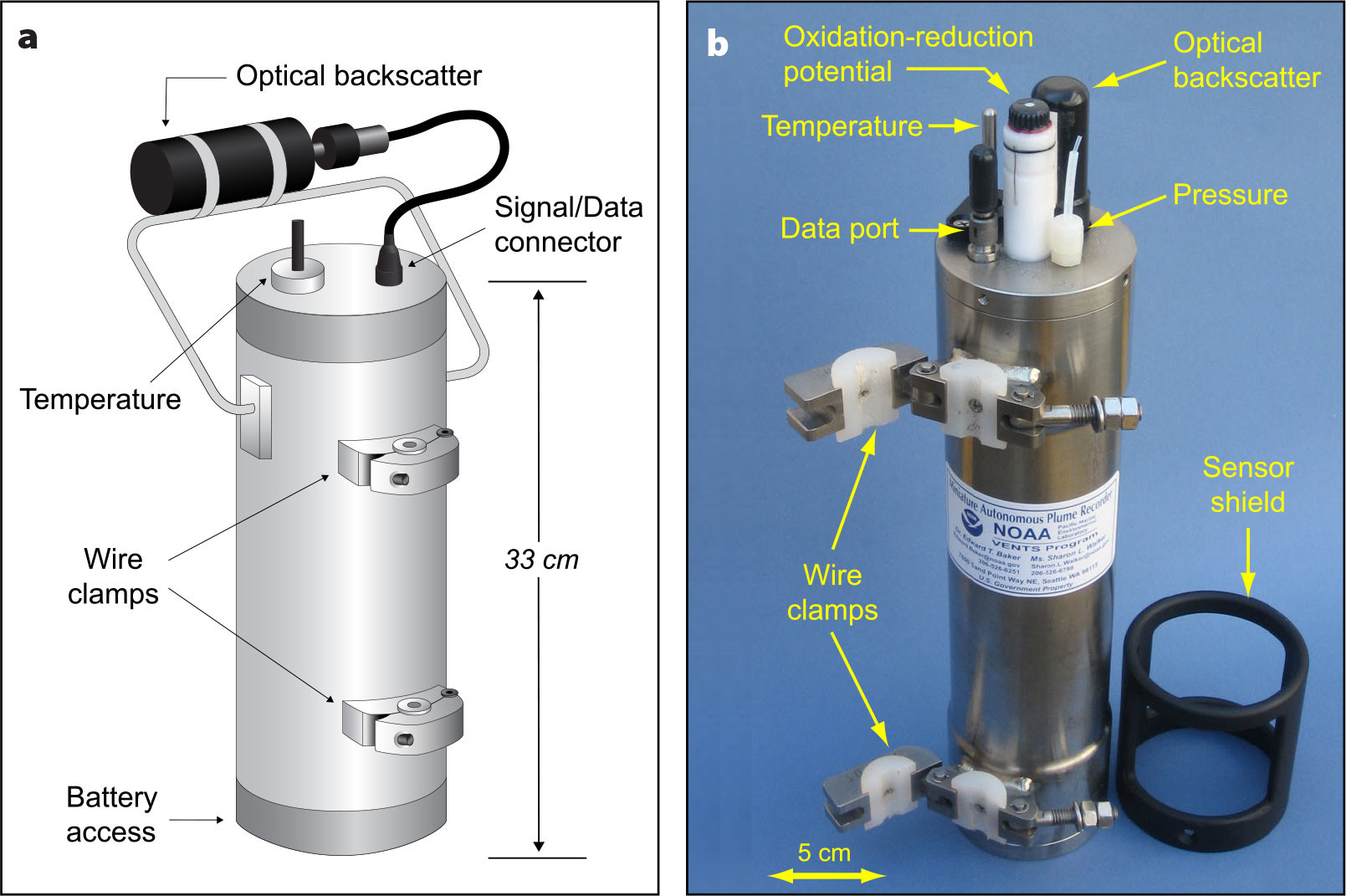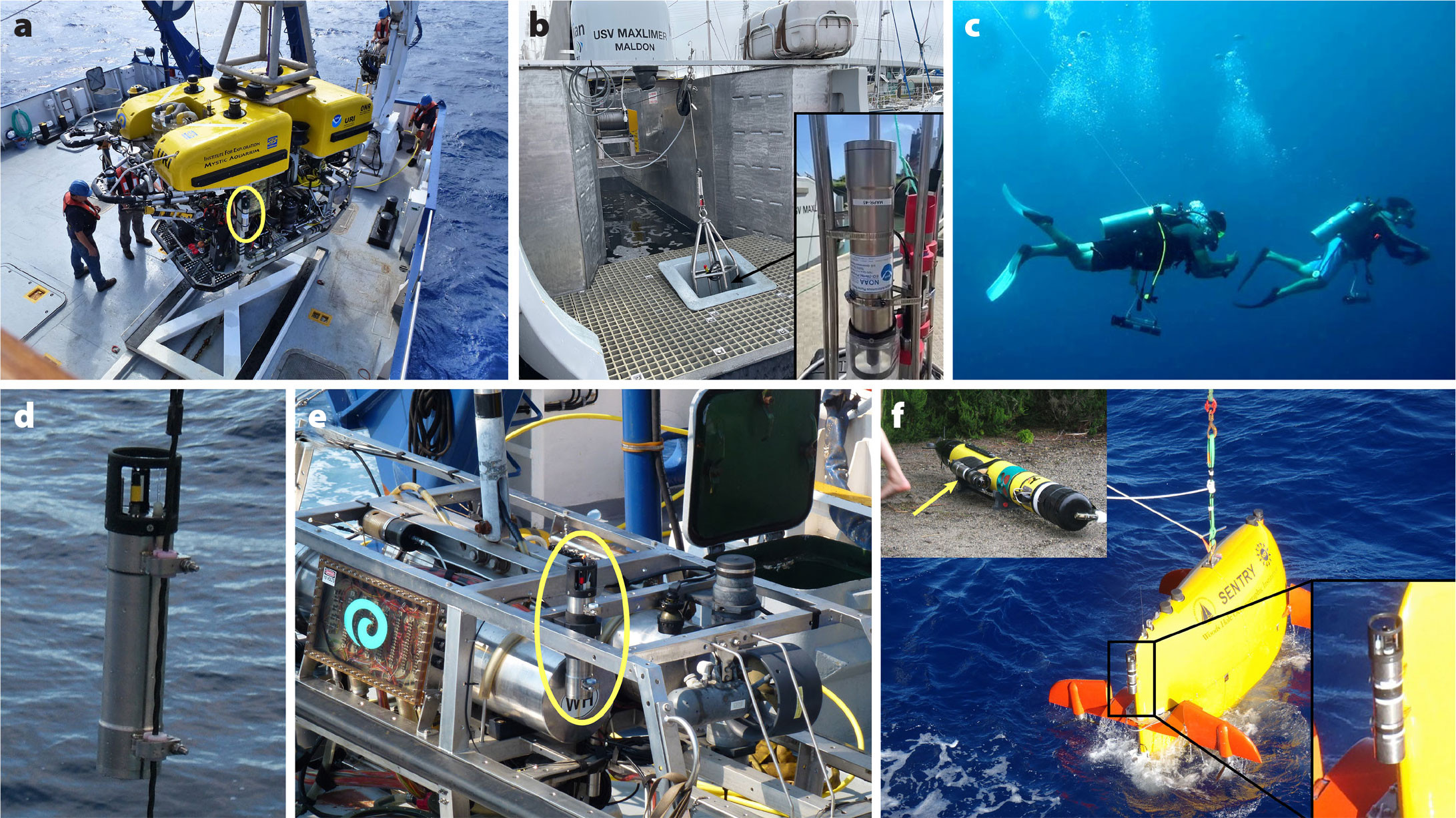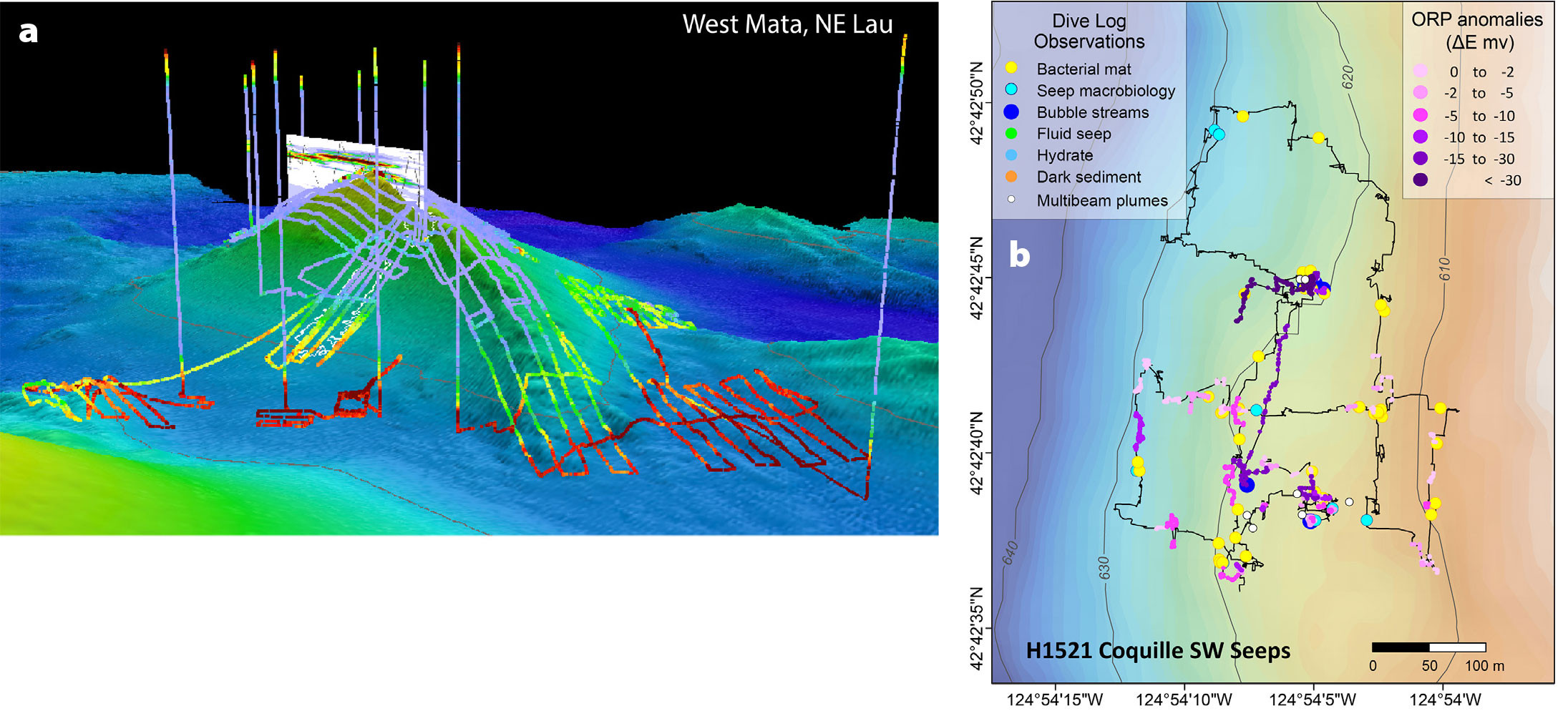Full Text
The NOAA Vents program was established in 1983 at the Pacific Marine Environmental Laboratory (PMEL; Hammond et al., 2015), just six years after the discovery of hydrothermal vents and their unique chemosynthetic ecosystems (Corliss et al., 1979). Because seafloor hydrothermal venting contributes significantly to the transfer of heat and mass from the solid Earth to the ocean, the program’s mission was to systematically explore, discover, and characterize the environmental impacts of submarine volcanism and hydrothermal venting on ocean physical, chemical, and biological processes. The program initially focused on the mid-ocean spreading centers in PMEL’s “backyard” (i.e., the Gorda, Juan de Fuca, and Endeavour Ridges in the Northeast Pacific) where segment-scale surveys detected plumes in the water column above the ridge crest that led to the discovery of numerous individual vent fields (see Hammond et al., 2015, and references therein). New technologies and techniques were created and/or adapted to address the challenges of finding and studying these vents. Repeat visits to the Northeast Pacific sites documented spatial and temporal changes, stimulating the development of new hypotheses about their associated biogeochemical processes. However, testing how broadly applicable these hypotheses would be on a global scale required discovering new vent sites from a far wider range of geological settings, and global-scale exploration requires significant resources.
|
|
The term “crowdsourcing” was not part of our collective vocabulary in 1995, but Vents program Principal Investigator Edward Baker envisioned doing just that by engaging the broader US and international community as collaborators in global exploration and data acquisition. He and other Vents program scientists teamed up with PMEL engineers to develop the Miniature Autonomous Plume Recorder (MAPR, Figure 1): a small, self-contained, easy-to-use instrument with sensors specific for detecting hydrothermal plumes that could be deployed, without dedicated technicians, on a variety of operations where wires lowered to the seafloor did not already have sensors to measure water column properties (e.g., wax corers, dredges, geophysical and seabed imaging systems). Additionally, with the discovery that seafloor volcanic eruptions generated “megaplumes” (Baker et al., 1987) with distinct physical and chemical characteristics, it was intended that MAPRs could be an easily mobilized observation tool for event response.
|
|
Originally, MAPRs included sensors for temperature, pressure, and optical backscatter, which provided data effective for detecting plumes enriched in hydrothermal particles such as those typically generated at high-temperature black smoker vents (Baker and Milburn, 1997). However, as new vent sites were discovered globally, in every ocean basin (e.g., Beaulieu et al., 2013) and from pole to pole (German et al., 2000; Baker et al., 2004), the diversity of vent sites became apparent, and the importance of exploring for low-temperature and particle-poor vent sites increased. To address this challenge, oxidation-reduction potential (ORP) sensors were added to MAPRs in 2005 (Walker et al., 2007). ORP is highly sensitive to dissolved reduced chemical species common in hydrothermal plumes (i.e., Fe2+, H2, HS–, Mn2+) even when particles are absent. An added benefit is that the ORP signal is more spatially limited than particle plumes due to the relatively rapid oxidation of the reduced species, which helps narrow the search area for source locations on the seafloor and improve spatial resolution of distinct discharge sites where overlying particle plumes may coalesce (Baker et al., 2016).
Development of the ORP sensor for MAPR instruments led to the creation of a stand-alone ORP sensor that was suitable for use as an auxiliary sensor on a standard CTD. This sensor was also designed and constructed by the PMEL engineering team. The PMEL MAPR program currently supports a fleet of 35 MAPR instruments and eight ORP sensors available for collaborative use by a wide range of academic, governmental, and commercial researchers. In addition to deploying MAPRs on dredges, wax corers, and towed geophysical observation systems, it has become common to attach them to autonomous underwater vehicles (AUVs), remotely operated vehicles (ROVs), and even scuba divers as they survey near-shore hydrothermal fields (Figure 2). In addition to being a valuable tool for global deep-sea hydrothermal exploration, MAPR instruments have been used to map far-field ash distributions from submarine volcanic eruptions (Figure 3a; Walker et al., 2019), define areas of hydrothermal discharge in volcanic lakes (Walker et al., 2016), monitor seasonal turbidity and deposition in an alpine lake (Roop et al., 2015; Levy et al., 2018), and for mapping the extent of methane seep sites (Figure 3b; Walker et al., 2018).
|
|
The Vents program evolved into the Earth-Ocean Interactions (EOI) program in 2014. EOI staff remains located in both Seattle, Washington, and Newport, Oregon, PMEL offices, with continuing participation by oceanographers, chemists, and geologists from cooperative institutes at the University of Washington and Oregon State University. By 2016, the scope of research expanded to include additional seafloor phenomena and processes that impact ocean biogeochemical cycles (Butterfield et al., 2023, in this issue). For example, over 3,500 methane seep bubble plumes, clustered into 1,300 individual sites, have been identified along the Cascadia margin between the Strait of Juan de Fuca (offshore Washington state) and the Mendocino Fracture Zone (offshore northern California; Merle et al., 2021). Several of these sites have been the focus of ROV dives to characterize the gases, fluids, substrate, and biology at the seeps (Baumberger et al., 2018; Seabrook et al., 2018). MAPRs mounted on the ROV during these dives confirmed fluid flow extended beyond visually identified bubble emissions, and was correlated with observations of chemosynthetic bacterial mats, clams, stained sediments, and other seep indicators, despite no visually identifiable flow noted in the dive logs (Figure 3b; Walker et al., 2018).
|
|
Ease-of-use and versatility have been defining characteristics of MAPR instruments since their inception. Originally viewed as something to attach to wires or towed platform frames, new and innovative deployment opportunities continually arise. Most recently, MAPRs were rapidly mobilized in response to the massively powerful Hunga volcano (Tonga) eruption of January 15, 2022. They were easily added to a custom-built cage that was deployed from a winch on the uncrewed surface vessel Maxlimer (Sea-Kit International). The vessel was sent to the Kingdom of Tonga to map the dramatically changed seafloor and investigate the status of ongoing volcanic and/or hydrothermal activity within the deep caldera/explosion crater formed during the event (Walker et al., 2022). The mission was operated entirely remotely from over 16,000 km away, with only two engineers located in Tonga to handle all aspects of vessel setup, maintenance, and liaising with local officials for necessary clearances, permits, and operational issues. Managing MAPR setup and data retrieval added very little time to their numerous other responsibilities.
Currently, the MAPR program provides equipment and support for 10–15 collaborative projects each year with US and international partners. The physical design has proven to be extremely durable and robust, with little need for modifications. However, thanks to new electronic capabilities and the expiring lifetimes of existing components, a significant redesign of internal electronics and software is currently underway. The next generation of MAPRs will have increased capabilities including faster sample rates, real-time data monitoring (i.e., during ROV dives), better power management for longer deployments, the potential to accommodate additional or different sensors, and easier, faster data downloads. We look forward to supporting new and innovative applications of this reliable ocean observation system in the years to come.

